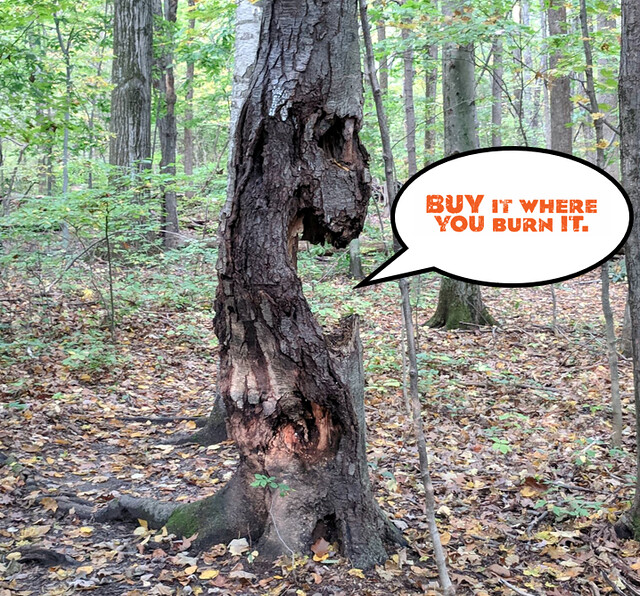
With Halloween a few weeks behind us, and the time for gathering family and friends to give thanks fast approaching, you might not realize scary creatures may still lurk outside… waiting for a free ride to your house or cabin… in your firewood!
Invasive, tree-killing pests – like the destructive Asian longhorned beetle and emerald ash borer – can hide deep inside firewood all through the winter as they develop and grow. Even in the cold, snow, and rain, invasive insects continue their lifecycle inside infested wood. In the spring, adult insects can tunnel out of the wood and escape to new homes – infesting trees near your home, cabin, campsite, or park. No thanks!
Using dead and dying trees for firewood can be fine with a few precautions. Don’t move firewood very far from where it was cut. Ideally, you should use wood on or adjacent to the property where it was harvested.
If you plan to go camping or enjoy a campfire this fall, follow these simple tips:
- Gather firewood on site, when permitted by the campground or land owner.
- Educate yourself on local rules or regulations regarding firewood before you go on a trip. Many campgrounds have requirements regarding firewood.
- Remember to buy firewood near where you burn it.
- Buy certified heat-treated firewood if you want to purchase firewood ahead of time. This type of firewood is heat treated in a kiln to ensure no insects or tree diseases can survive hidden in the wood.
There are other ways you can keep invasive pests from moving to new places if you’re planning to visit family and friends this Thanksgiving. Cars, RVs, ATVs and campers stored outside can become crusted with dirt and debris that may contain invasive insects and their eggs. Remember to wash your vehicle before you go over the river and through the woods to share holiday cheer.
If you plan to mail packages during the holiday season, don’t send homegrown plants, fruits, or vegetables from areas with pest quarantines.
Take special care to declare any food or natural souvenirs (such as wood handicrafts) from international trips. Visit the USDA traveler page to find out what’s safe to bring back from overseas.
Planning a long-distance household move? Inspect bikes, toys, outdoor patio furniture and tools. Look for egg masses and scrape them off or you could bring spotted lanternfly or gypsy moth to new places.
Help stop the spread of scary invasive pests by taking simple steps and being aware of the environment around you. Your trees will thank you!
Report signs of invasive pests at www.aphis.usda.gov/aphis/resources/pests-diseases/hungry-pests. Go to the “Find Pests by State” pull-down menu and call your local State Plant Health Director. Don’t assume somebody else has already reported them. The website also includes photos and descriptions of the 20 top pest threats that people can stop the spread of, and a federal quarantine tracker by state.
